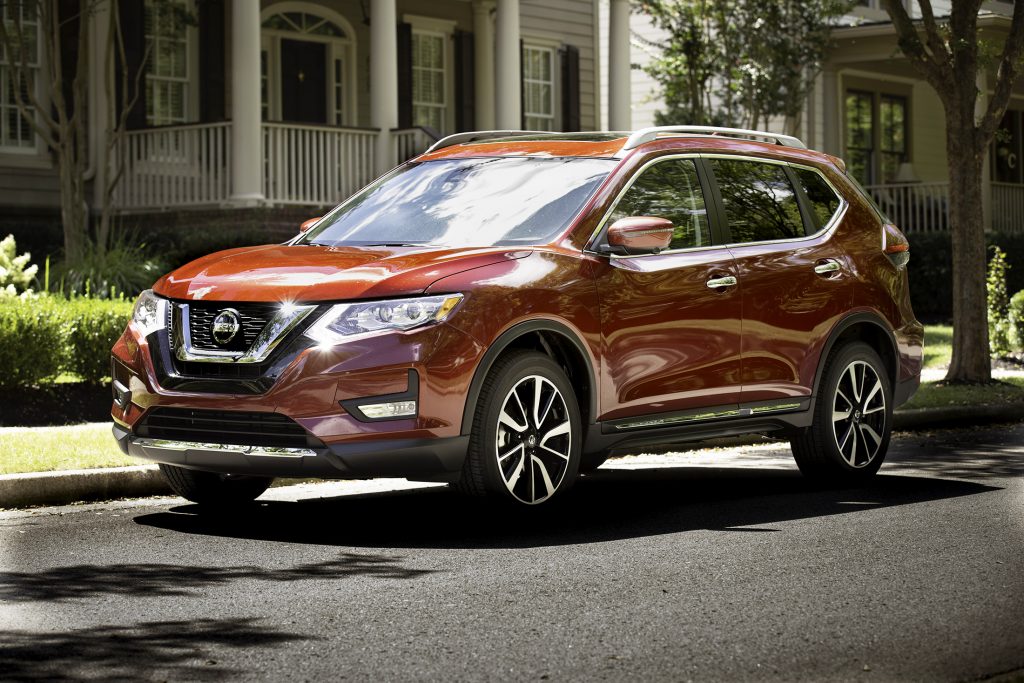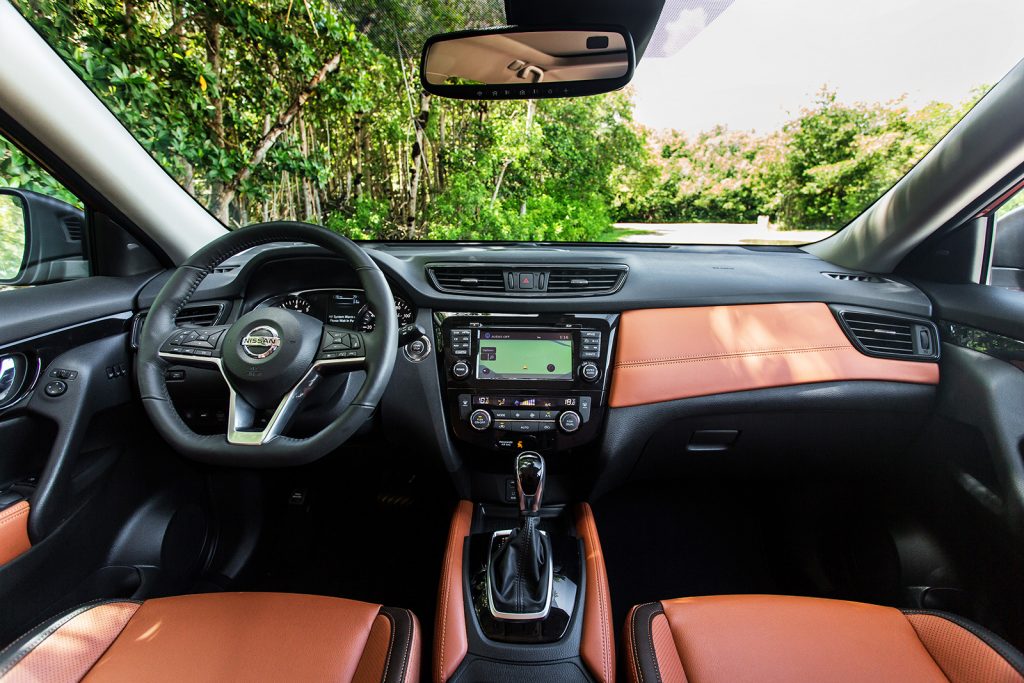Cargazing
By Derek Price
It’s not perfect. If you want to be picky — as any smart shopper should — you’ll notice an unrefined engine and lethargic acceleration keep it from being among the best in its hyper-competitive class. But for checking off all the right contemporary-car boxes, and doing so at a great price, the Rogue has fast become the prototypical family car for modern America.
It starts with the perfect dimensions.
Shopping for a crossover can be tricky because there are so many choices, and pictures can be deceiving. In a photo, most modern crossovers look remarkably similar with their upright, macho, SUV-inspired bodies and big liftgates in back.
In person, though, it’s a different story.
Some are tiny. Some are massive. Some have three rows of seats and a cavernous cargo area. Others are sized more like what we called “economy cars” a few years ago, with a cargo space meant more for appearance than actually holding anything bigger than a grocery bag.
The Rogue seems to hit a happy medium, a Goldilocks size that works for many families. Back-seat passengers will be reasonably comfortable, while the front seats are surprisingly generous. In fact, the Rogue feels bigger once you step inside it, a pleasant revelation.

The 2019 Nissan Rogue, priced from $25,020, mixes a generous features list with family-friendly size.
While some of its competitors have cargo areas that are borderline comical, the Rogue has a road-trip-friendly 39.3 cubic feet when the back seat is up. Fold it flat, and it increases to 70 cubic feet.
The feeling of spaciousness is helped by back doors that open very wide to an almost perpendicular 77 degrees.
Still, from the driver’s perspective, the Rogue handles more like a zippy, sprightly compact car. It’s easy to maneuver in parking lots, has excellent outward visibility and responds quickly to driver input, with one exception: the gas pedal.
That’s not unintentional. It’s because this vehicle is designed to prioritize fuel economy, something its owners will appreciate the next time gas prices spike at the pump.
Three things drive its efficiency: its 2.5-liter, four-cylinder engine, a lightweight body structure, and a continuously variable transmission (CVT) that translates infinite gear ratios into miserly fuel-burn numbers.
While I’d love to join the chorus of enthusiasts who lament the uninspiring feel of CVTs, the choice actually makes a lot of sense in this Nissan. The Rogue is designed to be budget-conscious. That’s a major reason it exists, which means the CVT fits the mission perfectly.

With two rows of seating and 39.3 cubic feet of cargo space, the Rogue has become Nissan’s best-selling model.
Putting a CVT in the Maxima, meant to be indulgent and exciting, remains blasphemous. In the Rogue, it’s hardly even noticeable.
What you will notice on every drive, though, is the technology in this vehicle.
If you buy one with ProPILOT Assist, Nissan’s suite of semi-autonomous driving and safety features, the Rogue will feel like it almost drives itself — and in a remarkably refined way. Steering assist and intelligent cruise control work together to help the driver follow the speed of traffic and stay safely in their lane.
A new Special Edition Package is available this year to add an upscale look, including 17-inch wheels and chrome trim. And all grade levels get Nissan’s smart Rear Door Alert that reminds you to check the back seat in case you left a child, pet or important cargo there by accident.
Pricing starts at $25,020 for the base S grade with front-wheel drive. It tops out at $32,840 for the luxury-oriented SL with all-wheel drive and ProPILOT Assist as standard equipment this year.
ProPILOT Assist is also now optional as part of a premium package on the mid-grade SL model.
Wheelbase: 106.5 in.
Length: 184.5 in.
Width: 72.4 in.
Height: 68.5 in.
Engine: 2.5-liter four cylinder (170 hp, 175 ft. lbs.)
Transmission: Continuously variable
Fuel economy: 25 city, 32 highway
RATINGS
Style: 7
Performance: 4
Price: 9
Handling: 6
Ride: 7
Comfort: 6
Quality: 7
Overall: 7
Why buy it?
It’s Nissan’s most popular model for a good reason. Its mix of size, features and price point appeal to many families. With the optional ProPILOT Assist, it feels very modern to drive.
